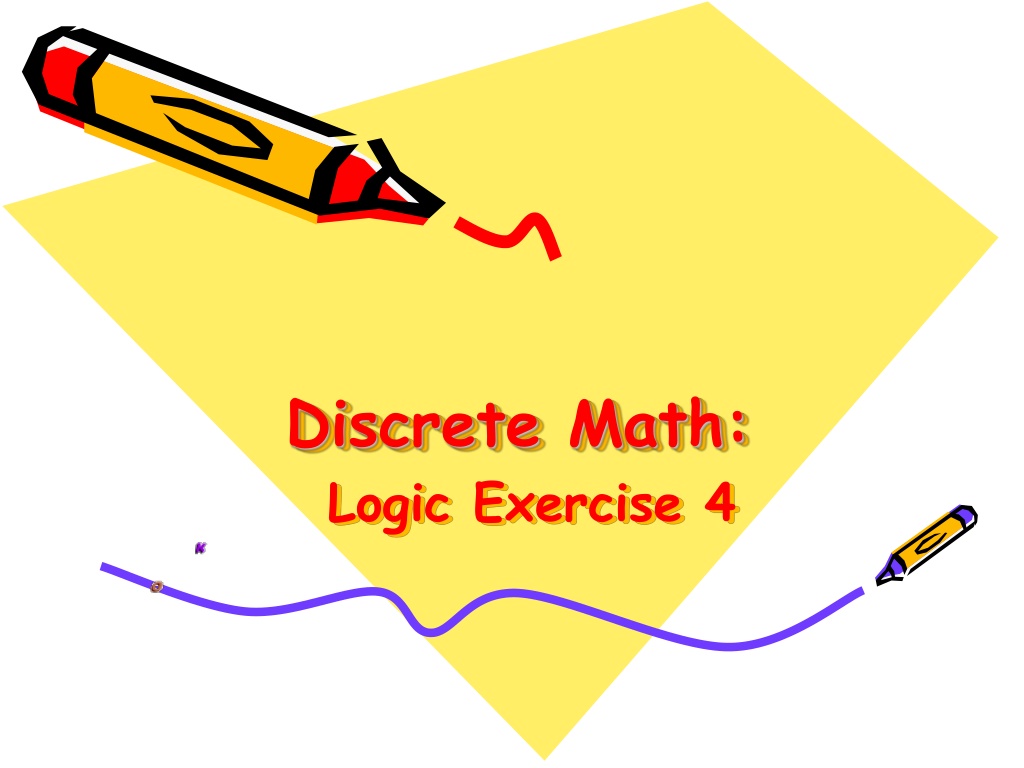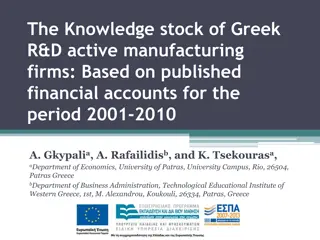Truth Value Analysis of Financial Data in Firms
Analyzing the financial data of Acme Computer, Nadir Software, and Quixote Media from the most recent fiscal year to determine the truth value of various propositions based on annual revenue and net profit. The solutions to the logic exercises for each proposition are provided.
Download Presentation

Please find below an Image/Link to download the presentation.
The content on the website is provided AS IS for your information and personal use only. It may not be sold, licensed, or shared on other websites without obtaining consent from the author. Download presentation by click this link. If you encounter any issues during the download, it is possible that the publisher has removed the file from their server.
E N D
Presentation Transcript
Discrete Math: Logic Exercise 4
Exercise Suppose that during the most recent fiscal year, the annual revenue of Acme Computer was 138 billion dollars and its net profit was 8 billion dollars, the annual revenue of Nadir Software was 87 billion dollars and its net profit was 5 billion dollars, and the annual revenue of Quixote Media was 111 billion dollars and its net profit was 13 billion dollars. Determine the truth value of each of these propositions for the most recent fiscal year. a) Quixote Media had the largest annual revenue. b) Nadir Software had the lowest net profit and Acme Computer had the largest annual revenue. c) Acme Computer had the largest net profit or Quixote Media had the largest net profit. d) If Quixote Media had the smallest net profit, then Acme Computer had the largest annual revenue. e) Nadir Software had the smallest net profit if and only if Acme Computer had the largest annual revenue.
Solution a) b) Both parts of this conjunction are true, so the statement is true. c) The second part of this disjunction is true, so the statement is true. d) The hypothesis of this conditional statement is false and the conclusion is true, so by the truth-table definition this is a true statement. (Either of those conditions would have been enough to make the statement true.) e) Both parts of this biconditional statement are true, so by the truth-table definition this is a true statement. This is false, because Acme's revenue was larger.
References Discrete Mathematics and Its Applications, McGraw-Hill; 7th edition (June 26, 2006). Kenneth Rosen Discrete Mathematics An Open Introduction, 2nd edition. Oscar Levin A Short Course in Discrete Mathematics, 01 Dec 2004, Edward Bender & S. Gill Williamson























